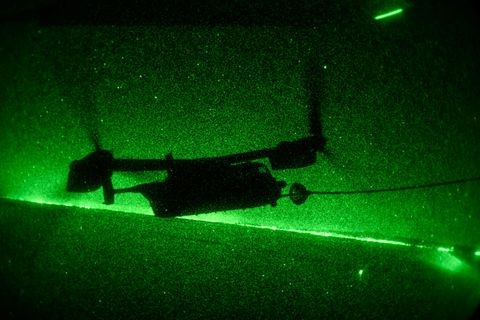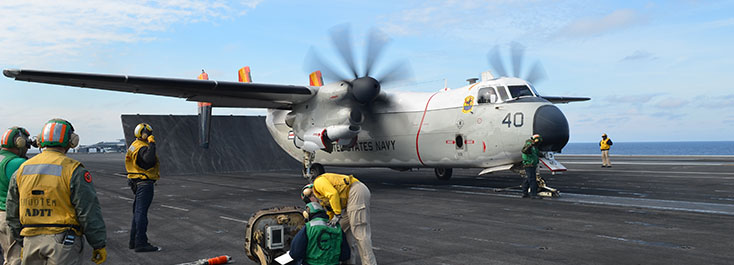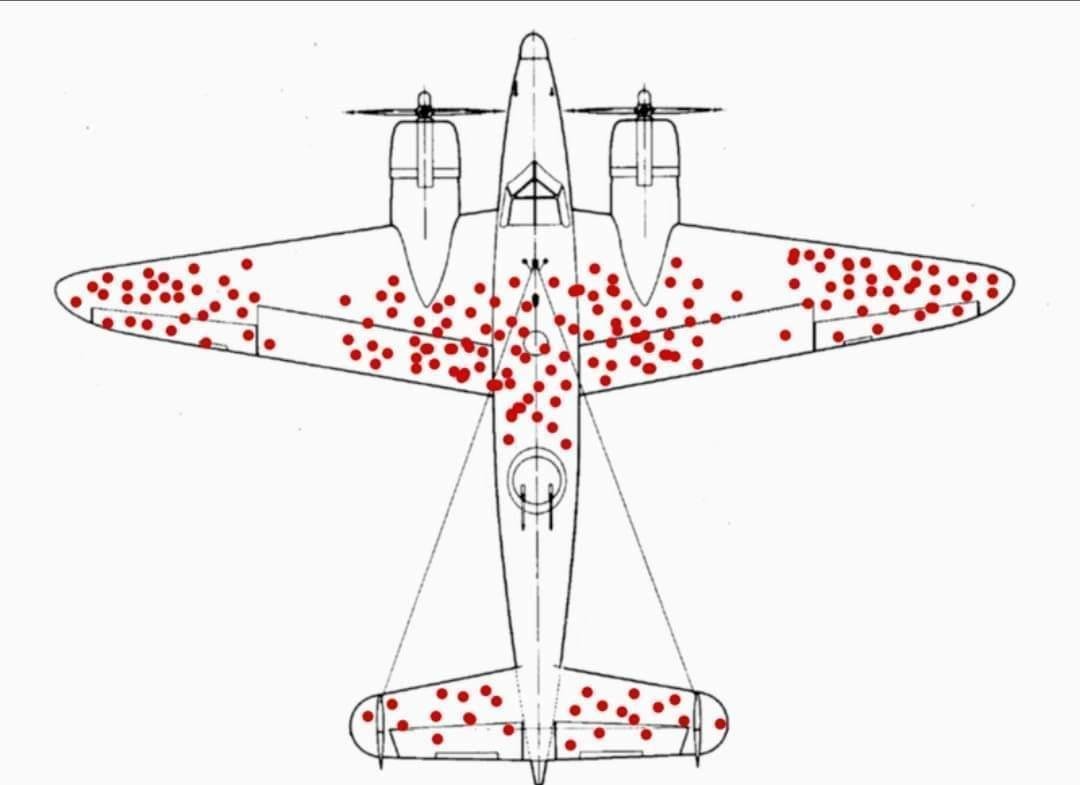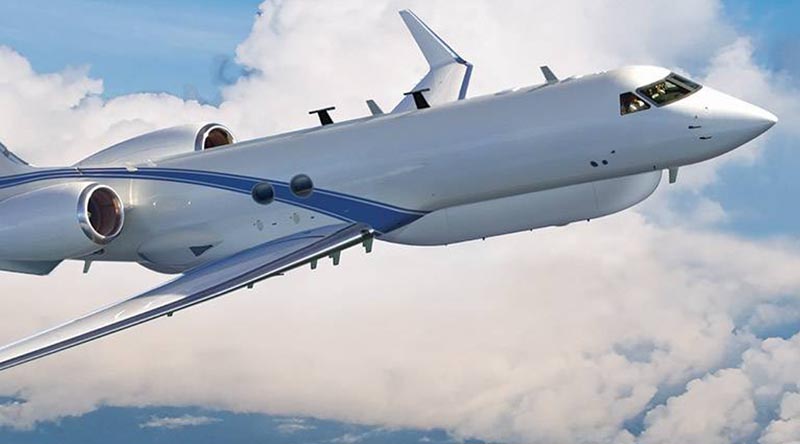|
|
||
|
||
|
Privacy Policy | Editorial Policy | Profit Policy | Join the Association | List of Members | Contact us | Index | Links |
||
|
Back Go to page: 1 2 3 4 5 6 7 8 9 10 11 12 13 14 15 16 17 18 19 20 Forward
|
||
|
Contents:
RAAF buys 4 Peregrine aircraft
|
||
|
Pedro’s Patter.
Excerpt from Jeff’s book – Wallaby Airlines.
March – June 1967
Once again, someone tried to kill me. This time, it was an ally.
Ian (Billy) Baldwin (below left) and I were tasked to take a load of civil aid cargo from Luscombe (Nui Dat) to a place called Xuyen Moc, also in Phuoc Tuy Province. The load consisted of clothing, toys, canned food and medical supplies donated by Australian charitable organisations and shipped to Vietnam on a RAAF C-130 courier. They were all packed in dozens of different sized cartons.
When I saw the loose jumble of packages arrive on a large army truck I thought of a close call I had had a few years previously. I was flying as a brand new copilot with an experienced captain on a RAAF Dakota. We had been woken up in the middle of the night for an emergency trip from Sydney Airport to Laverton in Victoria. The purpose of the trip was to take some Navy divers and their equipment to check out the wreckage of a USAF B-57 (Canberra) reconnaissance aircraft, which had earlier crashed into Corio Bay after taking off from Laverton. I never found out what the urgency was all about. Whoever loaded the gear onto our aircraft did not know much about weight and balance. There was a pile of stuff all over the cargo compartment floor, crudely secured with straps. The captain accepted it with some misgivings. On departure, after an abnormally long take off run, it took the two of us to haul the DC-3 off the runway, making the captain wish he had been more vigilant about checking the loading documentation.
With this in mind I asked the major in charge of the project for the weight and balance documents. He brandished a sheaf of papers at me almost contemptuously. It was very sparse. I went into a huddle with Billy and Bugs Rose. I always seemed to be with Bugs or Stew Bonett when there was trouble.
'How can we work out an accurate weight and balance summary for take-off with this lot?' I asked him. Our crew chiefs always supervised loading and used a special slide rule to calculate centre of gravity, even so, the validity of their calculations depended on accurate knowledge of pallet, or in this case, individual item weights.
'I doubt if they've weighed everything', replied Bugs, looking at the hundred and one boxes. We did not even know if they had scales out here at this rough-and ready strip. 'We'll just have to estimate it as it comes off the truck', said Bugs.
We stood in the hot sun while the load was transferred from truck to aircraft.
Caribou pilots had a lot of experience working with the Army, both in
Vietnam and back home. Army support was our main role. We often felt that
Bugs (right) did his best with the available information, lifting the heavier boxes himself to try to confirm the weights. Loading complete, we prepared to depart and were surprised to find that the Major and four other officers intended coming too. This made us 1000 pounds heavier, but on paper, within limits.
I taxied out to the first few feet of the runway.
Now I haven't told you about Luscombe. At 2900 feet it was a reasonably long dirt runway with a considerable slope, which made one-way operation necessary for the Caribou. One landed uphill towards a tea plantation and took off downhill towards a 1700-foot hill. From the downhill end, the thickly treed terrain sloped gradually uphill over about three miles towards the mountaintop.
On impulse I ran the engines up to almost full power before releasing the brakes. The Wallaby lurched forward, accelerating quickly down the slope. Around 75 knots, about halfway down the runway, I pulled back on the control column to get us off the ground. Nothing happened. With this downhill slope, it was too late to stop.
'Give me a hand!' I yelled to Ian. We both strained at the control column, the trees at the end looming dangerously close.
The aircraft staggered off the ground. I whipped the gear and flaps up, but now we seemed barely able to outclimb the terrain. I gingerly turned away from the high ground. It was a mile before we reached normal climb speed and relative safety. I exhaled in a long breath. There was no need to say anything to Ian. His grim expression reflected my thoughts.
Our troubles were not yet over; we still had to land. We were definitely out of balance, our centre of gravity being too far forward, and were probably overweight. There was no hope of rearranging the load in the air and no point in diverting, since Xuyen Moc was quite a good strip. So we continued.
Adding an extra ten knots to our normal approach speed, just in case we were grossly overweight, I set us up on a long flat approach. All was normal until, at roundout, I closed the throttles. Then, to coin a well-known flying expression, 'the arse fell out of the approach' and the Wallaby thudded onto the runway. In spite of this ungainly arrival, the ordeal was over with no damage to the aircraft. All that remained was to chastise the major (in spite of his seniority) for putting us into this situation and hope he had learned something from it about aircraft weight and balance.
After this experience, I wondered what would happen next. But the next couple of weeks passed quietly enough. There was one entry recorded in my diary. I had recently been appointed officer-in-charge of the Sergeants Mess, and was often there for stocktakes, or to have a drink with the blokes.
One night, a recently arrived sergeant who was a bit under the weather approached me in the bar. 'How long have you been here sir?' he asked. 'Eight months', I told him, wondering where the conversation was heading. 'I've heard all sorts of stories' , he said. 'How safe do you feel walking around the town?'
I could see from this and further urgent questioning that the poor bloke was scared out of his wits. I relate this not to make light of his problem, but because at the time it seemed unusual.
|
||
|
From years gone by - True or false?
Common entertainment included playing cards, however, there was a tax levied when purchasing playing cards but only applicable to the 'Ace of Spades.' To avoid paying the tax, people would purchase 51 cards instead. Yet, since most games require 52 cards, these people were thought to be stupid or dumb because they weren't 'playing with a full deck.'
|
||
|
Looking back, I remembered feeling quite uneasy about coming to Vietnam. But my apprehension was more of how I would react to potentially dangerous situations than of danger itself. Once in the country, caught up in the busy day to-day routine and feeling reasonably capable of assessing and avoiding danger, this uneasiness had left me. Even so, I occasionally contemplated the chances of a stray round finding its mark, or of someone tossing a grenade in my direction. After eight months here, I felt almost indestructible and sorry for this poor bloke who feared death simply walking down a Vung Tau street.
His concern highlighted a funny thing about this war. Often no one seemed to know exactly who or where the enemy were. Fishing boats could turn out to be troop transports. Peasant farmers in a rice paddy could suddenly turn into militiamen if an aeroplane few carelessly low. A dead soldier's body could be a booby trap. There were even stories bandied about that some downtown prostitutes enticed servicemen into their premises so that local VC sympathisers could slit their throats.
While few people I knew believed the more extreme stories, particularly concerning the townspeople, there was nevertheless an atmosphere of credulity and apprehension about, however well disguised. This state of mind perhaps explained some of the well-documented overreactions of the war, where a VC sighting might lead to B-52 saturation bombing, or an atrocity to a government official result in destruction of a village. So I could hardly blame the sergeant for his neurosis.
Having accumulated some experience here, I was elevated to check captaincy, which meant that I spent a lot of time in the right-hand seat, acting as captain, but allowing copilots who had not received their captaincy to fly the aircraft and gain experience.
We had quite a few 'young' (20- 21 year old to my 26) copilots at this stage. We called them 'bog rats'. It was hard to sit there watching them make the same old mistakes without being unduly critical or dampening their enthusiasm. There were so many lessons to be learnt here. For example, how to climb out avoiding the cumulus cloud, which built up so fast you could actually see it boiling and bubbling upward. Or how to plan a descent both to remain clear of cloud and allow least exposure to possible ground fire. Or how to land a heavy Caribou in a roaring cross-wind on a short, narrow strip. Even which way to taxi at Tan Son Nhut (Saigon) to get the quickest departure. I was rather glad to get away from this and back to Nha Trang with Ian Baldwin.
Our run up to Nha Trang now took us through Phan Rang, a large base with 10,000-foot parallel runways in the valley south-west of Cam Ranh Bay. 2 Squadron, operating Canberras, had recently been allocated to the war effort and commenced operations in April from here. The RAAF Airfield Construction Squadron had been working here for months preparing facilities for the squadron's arrival. Regular Wallaby 405 missions also included a routine stop at Phan Rang due to the RAAF presence.
On this detachment, we did not go near Pleiku or the northern camps. We flew mainly west to Gia Nghia, Dalat and Due Xuyen. On the second day, we arrived at Dalat to find 24 cows tethered to a large crate. A Special Forces NCO ambled over and informed us we were to shuttle the cows to Due Xuyen. He had correctly calculated that we could do it in three sorties.
Can you imagine a Caribou with eight baulky cows tethered inside, mooing furiously after being cajoled, shouted at and finally pushed up the cargo ramp? They wore a look of bovine determination to turn on a performance for the very next person who tried to move them. After three cattle-shuttles to Due Xuyen, we felt more like cowpokes then aircrew.
Stew McAlister, admiring my M1 rifle, had asked me to get him one. I had heard Due Xuyen was a good place to do this. On our second run, the Special Forces crew who came for the cows handed over a brand new M1, still packed in grease, for a carton of one dozen cans of Australian fruit juice, evidently a prized item out here in the hills. I could not help wondering what the exchange rate was on a jeep, or an artillery piece.
The Montagnards of Due Xuyen lived in their original village, not in a fortified camp, as was usually the case. In between cows, we wandered over for a look.
A deep, river ravine separated the airstrip and the village. A clever but somewhat rickety wood and rope suspension bridge had been built across the river with the help of the Special Forces advisers. We all walked across without thinking twice and were met on the other side with amazed looks from the local people. Evidently many intending visitors refused to cross in case the bridge collapsed.
The village houses were New Guinea style, round thatched grass and twig structures set among bougainvilleas. Naked children played in the dirt while their elders watched from the shadows. We tried talking to the adults but they were either too shy or had no English.
After carrying 24 cows, one had to pick one's way through the cargo compartment with the delicacy of a barefoot lady crossing a farmer's paddock. The stench was unbelievable. At Nha Trang, before putting the aircraft 'to bed', Stew Bonett asked us to call for a water tender. The fire crew looked on incredulously as Stew opened the top hatch of the cockpit, poked the hose nozzle through, and sprayed water down the cargo compartment floor, sluicing out all evidence of the cows.
One morning, we arrived at the Special Forces ramp to find two Vietnamese passengers sitting patiently on a crate. One was a white-haired old man with a wispy beard and the brown, wrinkled skin and stoop of one who had spent many years planting and picking rice. He looked like a relative of Ho Chi Minh. The other was a young boy with a patch over one eye, who grinned cheerfully at us.
The Special Forces lieutenant, whom we knew quite well, told us a moving story. The old man was the boy's grandfather. The boy's parents had been killed in a VC reprisal raid on their village. An American doctor in the village advisory team, after examining his blind eye, had sent the boy to Nha Trang to an American military hospital. The resident neurosurgeon, diagnosing a brain tumour, had removed the tumour and the boy's eye, but it was too late to save his life.
His grandfather was taking him home, on our aircraft, to die.
Back at Yung Tau, I was once more faced with unpleasant reminders of death. I was again rostered to bring back caskets from Saigon. This time, fortunately, there were only two Army NCOs who had died heroes' deaths and now awaited their final trip home. Tragically, the wife of one man had committed suicide after hearing of her husband's fate. Burdened with this macabre story, we set out for Yung Tau, where the caskets would be transferred to a RAAF C-130.
Halfway there, Dick De Friskbom the crew chief, ashen-faced, reported a terrible smell in the cargo compartment. Going back to inspect, I noticed fluid leaking from one casket. I remembered a phrase I had once heard: 'the sickly sweet smell of death'. It was overpowering. Whatever the cause, the casket could not travel thousands of miles like this and should be checked back at the military mortuary. I decided to return to Saigon. We brought Dick and his assistant onto the small fight deck and, for the first time ever, shut the sliding cabin door.
|
||
|
Early politicians required feedback from the public to determine what the people considered important. Since there were no telephones, TV's or radios, the politicians sent their assistants to local taverns, pubs, and bars. They were told to 'go sip some Ale and listen to people's conversations and political concerns. Many assistants were dispatched at different times. 'You go sip here' and 'You go sip there.' The two words 'go sip' were eventually combined when referring to the local opinion and, thus we have the term 'gossip.'
|
||
|
In line with our increased Task Force support role, most of my time at Yung Tau now seemed to be spent shuttling Army men and equipment into or out of Luscombe or running POL (fuel) to various ports in the Delta. Vinh Long, Binh Thuy, Soc Trang, Tra Vinh and, lately, Ben Tre to name a few. Some places had so many barrels of POL stacked beside their strips they must have had a month's supply or more. These places were used as forward bases for periodic helicopter-borne operations.
Another such place was Bac Lieu, our Wallaby 406 stop. Arriving there one day, there were so many choppers parked close to the already narrow runway's edge that we could not land. Bac Lieu missed out on its mail that day.
American involvement was now near its peak and military activity seemed to be increasing every day. So did the numbers of Vietnamese who surged forward in a human wave wherever we stopped. It did not matter where we were going, they wanted to go too, civilians and soldiers alike. Many, aware that they required papers to travel arrived with pathetic dog-eared scraps of paper, which they had obviously written themselves, claiming official permission. Many simply begged. We had to literally push them off the aircraft. How could we take them, and where did they really want to go?
On detachment again, with Stew McAlister, we were sent to Pleiku. After a long and hard day's work, we had time for one more short run. The TMC controller had half a load for Plei Me.
'Is that all?' I asked.
'Yes, unless you want to take her', he replied, gesturing towards a Montagnard woman sitting among the boxes and oil drums beside a crude plywood box.
We were told that the box was a coffin containing the body of the woman's husband. They had lived all their lives in Plei Me village until his unit was sent here to Pleiku to fight. For the first time in her life she had had to leave Plei Me too to bring her husband home. Evidently, she had waited here pathetically for three days lost among the forklifts and the crates, the trucks and the aeroplanes of this strange and frightening place, waiting for someone to help her. No one had. It was a sad case. We put them on the aircraft.
Next day, we did several runs to a place called Mang Buk, another Special Forces mountain camp. Making the usual pleasantries with the Americans who met us, I noticed something unusual. There were no blacks here. Since about 20 per cent of the US armed forces in Vietnam were blacks, this was hard to understand, until the captain who met us spoke, his accent revealing he was born and raised in the Deep South:
“Howdy, Aussies. Osstralia sure sounds like a great place. Ah'd sure like to come down there some time. Ah understand you don't have no nigger problem like we do.”
An energetic tribal chief led the Montagnard loading party here, in contrast to other camps. As a symbol of his authority, the US advisers had given him a discarded oversize sports jacket and a baby's bonnet, both of which he wore with visible pride. The Americans derived great amusement from his ridiculous appearance, but of course he did not know what they were laughing about and waved and smiled back at them.
'These Goddamn 'Yards [Montagnards] are no better than niggers and slopeheads [Vietnamese], you know. Keep 'em in their place, and they're OK' , the captain confided. I was glad to get out of there.
Dak To, (right) 30 miles north of Pleiku, was bustling with choppers. They went out in waves heading west. Flying out of Pleiku, we were given artillery warnings and took a zigzag course along the valley to the north. Our efforts were concentrated on Plei Me, Mang Buk, Dak Pek, Dak To and Dak Seang.
Since taking over the US Army's Caribou fleet, the USAF had modified their initial bans on operations into these places, and an American Caribou was also shuttling out of Pleiku. The USAF machine was on the ground when we arrived at Dak Pek. The pilot of this one was a lanky and laconic captain with a weather beaten face. He looked like an airborne version of Gary Cooper. His copilot by contrast was short and stocky, like James Cagney.
|
||
|
As incredible as it sounds, men and women took baths only twice a year (May and October). Women kept their hair covered, while men shaved their heads (because of lice and bugs) and wore wigs. Wealthy men could afford good wigs made from wool. They couldn't wash the wigs, so to clean them they would carve out a loaf of bread, put the wig in the shell and bake it for 30 minutes. The heat would make the wig big and fluffy, hence the term 'big wig'. Today we often use the term 'here comes the Big Wig' because someone appears to be or is powerful and wealthy.
|
||
|
During unloading, the captain asked us to help carry a company of Montagnard
troops to Plei Me. There were 75 men. The captain had conveniently divided
this number into three sorties of 25 pax, two for him and one for us. I was
glad to help, but he was a little sour when I offered to take twenty.
He took off uphill, the more favourable direction. Normally we departed Dak Pek almost empty. Under these conditions the Caribou lifted off before the cutting near the other end of the strip. However, our USAF friend continued on past the cutting onto the last third of the strip, which was downhill, finally disappearing from view. We stopped everything and waited for the crash. Miraculously, we could still hear the engines roaring at take-off power. After an age, the Caribou reappeared off the other end of the strip still barely climbing, having obviously followed the river valley, which fortuitously formed a semicircle around the camp and strip, until he had sufficient height to clear the terrain.
We put on our 20 troops and left.
That night, back at Pleiku, we were briefed about bunker procedure in the event of an alert. This was something new. Next day, at the TMC ramp, our first load arrived. It was a truckload of VC prisoners bound for Tuy Hoa. Another first.
They looked rather bedraggled sitting in the back of the truck in the pouring rain. They behaved themselves during the flight. When I looked around once or twice they were sitting stoically on the canvas seats, roped together, probably wondering what was going to happen to them at the other end.
Tuy Hoa South was now a big fighter base. Parallel 10,000-foot solid steel plate runways had been laid out on the barren, sandy landscape where a few months before there had been only a tiny gravel strip. Jets roared off at irregular intervals, disturbing the calm of the glassy sea.
We left our passengers to an uncertain future and continued to Nha Trang.
Nha Trang TMC had a load for our return flight. The load was for a place known as An Khe Golf Course to distinguish it from another airfield of the same name. The significance of the name escaped me. My guess was that to the builders of the airfield the lush green flats, punctuated by small swampy ponds and an odd little rocky outcrop, must have looked like a stateside country club. Golf Course was now a VNAF base, operating choppers and light aircraft. The control tower, more like a command post, dominated its rocky hilltop setting.
Back at Pleiku a flat tyre held us up only a few minutes, thanks to Bugs Rose and Blue Campbell. We had time for one more run to Plei Me before dark. It was here that I made one of those errors which one sometimes makes due to the pace of events and, probably, a certain amount of overconfidence. At least, that is my story.
We had been into Plei Me first thing in the morning. The smoke flare put out by the Special Forces favoured a landing to the west. Conditions back at Pleiku had not changed all day so, without paying too much attention to available wind indications, I joined the Plei Me circuit for the westerly strip.
As I said before, Plei Me was a minimal Caribou strip. I touched down about 100 feet into its 1200-foot length, and selected reverse. Looking ahead, the other end, over a hump and slightly downhill, seemed to be coming up abnormally fast. I instinctively tramped hard on the brakes and selected full reverse. We finally stopped, only a few feet from the end. I sat there for a moment breathing hard, oblivious to the swirling clouds of dust kicked up by the propellers, which were still in full reverse.
When I taxied into the parking area, the flags in the compound confirmed what I had just found out by bitter experience. We had landed with a ten knot tailwind. It was a lesson for both of us.
The detachment was over all too soon and I was back in the Delta, watching the 'bog rats' practise their landings. On a previous Wallaby 406, Stew Mac and I had chatted to the doctor in charge of the Australian medical team at Long Xuyen. Accepting his invitation, we hitched a ride down to stay the night, intending to return on the next day's mail run.
The doctor and his team of nurses were all volunteers on sabbatical leave from the Royal Melbourne Hospital. He showed us around the hospital whose three wards were crammed. The beds were little more than a foot apart, and there were often two or three patients to a bed. The families of many of the sick also 'camped' here, mostly on the wide hospital verandah, but sometimes on or under the beds of their sick relatives. Pleasant aromas wafted in from the verandah as family members outside cooked meals on small braziers. Curious faces peered in through the windows, perhaps wondering if we were new doctors whose favours needed to be cultivated. Not exactly like your typical Australian hospital.
The ailments and injuries we saw were terrible, like nothing you would see in Australia. Many people had shocking shrapnel injuries, with grotesquely disfigured limbs or faces. We were introduced to an ambulatory patient known as Sam, who helped around the wards. Sam had a huge chunk out of the back of his neck. While we were speaking to him I heard a noise behind me, and looked around to see Stew lying on the floor. Sam, or the humidity, had apparently been too much for him. I did not blame him. I felt revolted too. But growing up in the country and hanging around farms had prepared me for such gruesome sights.
Our doctor host told us that serious complications of routine ailments, such as appendicitis, were commonplace due to lack of early treatment. Such was the pressure on bed space and the medical ignorance of these simple people, that many who had had surgery left hospital after a day and never returned for post-operative care, even to have stitches removed. The hardworking and compassionate team treated all comers, asking no questions, doing their best under primitive conditions, and hoping those patients who disappeared recovered on their own.
After the hospital tour the doctor told us a little about the Australian medical aid program, and health matters generally. Evidently diseases such as TB, internal parasites, malaria, plague, cholera and leprosy were major problems in different parts of the country.
Part of the aid program had focused on malaria eradication but collapsed due to the military insecurity of swampy areas. Attention was then directed to increasing medical care for the rural population as city facilities improved and the Vietnamese were trained in health care. This project too was doomed to failure due to escalation in the numbers of war casualties requiring treatment.
The end result was military medical aid in the regions and placement of civilian surgical teams at selected provincial hospitals. Long Xuyen was one such hospital.
The medical team turned on a simple but enjoyable meal. Then we sat around and talked and listened to some music. I am sure these selfless civilian volunteers enjoyed our Aussie conversation devoid of the usual military or medical matters. After a pleasant evening we retired to spartan rooms in the whitewashed building dubbed the 'White House' by the team.
The almost monastic austerity of Long Xuyen contrasted with improving comforts at American messes. The new Special Forces Mess where we stayed at Nha Trang now had draught beer and Coke as well as a popcorn machine. The temporary look of eight months ago was giving way to a settled, more permanent appearance at the large bases, with long runways, better buildings and more comfortable facilities. The frontier society was slowly giving way to the popcorn and Coca-Cola culture. Pity about the 'grunts' out in the boondocks.
Alternatively, the same C-47 Dragonships, which carried the fearsome targetchopping Gatling guns, could be used to rain thousands of messages on the jungle offering clemency to deserters of the VC cause. Having experienced the hot breath of the Gatling guns, I was not at all sure anybody would stick around to read a leaflet telling them how their life would change for the better if they betrayed their political masters.
I am sure other aspects of the program would have been more successful, such as the many civil aid programs sponsored and carried out by Americans and in Phuoc Tuy Province by the Australian Task Force.
I was never quite comfortable with our American allies. Their attitude was rather patronising, perhaps unwittingly, since they were always courteous and hospitable, but they often acted as though they were bestowing a favour on a poor relation. I felt considerable pride in the effort our shoestring operation was putting up, in comparison with their well-equipped squadrons. When we crashed an aircraft, we scoured the country for spare parts to patch it up and put it back into service. Pranged American aircraft were generally left where they came to a stop. I gritted my teeth at the frequent question: 'Say Aussie. When are they going to open up Australia for R&R? - as though this single act was vital to the economy and wellbeing of the Australian people.
The period November 1966 to March 1967 was definitely the busiest of my whole 12-month tour, maybe even my whole life, but March could only be described as frantic. At the end of that month I discovered I had flown 145 hours, at that stage a squadron and RAAF record. No wonder I felt totally stuffed. There was a small write-up about the record in the RAAF News. Later a tongue-in-cheek article appeared in Australian newspapers, during an airline pilots' arbitration hearing for more pay, comparing our workload with that of the 'greedy' pilots.
Maybe it was a coincidence, but the RAAF sent up a psychiatrist to speak to many people up here. He was a squadron leader in the Active Reserve. Maybe the RAAF hierarchy felt people here were getting stressed out. Rumour had it that they were thinking of shortening the tour again. It was originally eight months. If I had been interviewed, I would have certainly recommended it. A letter from home said the psychiatrist was later interviewed on TV. Nothing came of it though.
Towards the middle of June, physically and mentally weary and knowing I was becoming grumpy and irritable, I was glad to head off again for a few days in Butterworth.
Looking back, I realise I was at a stage where I had seen it all and done everything there was to do. Where a month or so earlier I had enjoyed helping new arrivals learn, now it was more of an irritation watching them make mistakes.
Nevertheless, I was consoled by the fact that the next time I left the country, it would be for good.
Click the pic below to see the old Caribou at the 2007 air show in NZ |
||
|
|
||
|
|
||
|
In the late 1700's, many houses consisted of a large room with only one chair. Commonly, a long wide board folded down from the wall and was used for dining. The 'head of the household' always sat in the chair while everyone else ate sitting on the floor. Occasionally a guest, who was usually a man, would be invited to sit in this chair during a meal. To sit in the chair meant you were important and in charge. They called the one sitting in the chair the 'chair man.' Today in business, we use the expression or title 'Chairman' or 'Chairman of the Board.'
|
||
|
The Consolidated B-32 Dominator.
The Consolidated B-32 Dominator was an American heavy strategic bomber built for the United States Army Air Forces during World War II. It had the distinction of being the last Allied aircraft to be engaged in combat during World War II. It was developed by Consolidated Aircraft in parallel with the Boeing B-29 Superfortress as a fall-back design should the B-29 prove unsuccessful.
The B-32 only reached units in the Pacific during mid-1945, and subsequently only saw limited combat operations against Japanese targets before the end of the war. Most orders of the B-32 were cancelled shortly thereafter and only 118 B-32 airframes of all types were built.
The engineering development of the B-29 had been underway since mid-1938 when, in June 1940, the United States Army Air Corps requested a similar design from the Consolidated Aircraft Company in case of development difficulties with the B-29. Like the B-24 it was originally designed with a twin tail and a large Davis wing, but with a longer, rounder fuselage and a rounded nose. The powerplants were to be the same quartet of eighteen-cylinder, 2,200 horsepower Wright Duplex-Cyclones, as specified for B-29s. The aircraft was designed to be pressurized and have remote-controlled retractable gun turrets with fourteen half inch machine guns. It was to have an estimated gross weight of 101,000 lb. The first contract for two aircraft was signed on 6 September 1940, the same day as the contract for the Boeing prototype XB-29.
The first aircraft made its first flight on 7 September 1942 but due to problems with the pressurization system, the gun turrets and landing gear doors, these items were omitted on the first prototype. The aircraft had R-3350-13 engines inboard and R-3350-21s outboard, with all four powerplants driving three-bladed propellers. The prototype was to have persistent problems with engine oil leaks and poor cooling though the B-29 had similar engine problems. The inboard propellers' pitch could be reversed to shorten the landing roll or to roll back in ground manoeuvres.
The first aircraft was armed with eight half inch machine guns in dorsal and ventral turrets, and an odd combination of two .50 calibre and one 20 mm cannon in each outboard engine nacelle firing rearwards, plus two .50 calibre machine guns in the wings outboard of the propellers. The turrets were remotely controlled from periscopic sights in aiming stations inside the aircraft. The sights were coordinated by a sophisticated analog computer system developed by Sperry Gyroscope Company.
In March 1943, the initial contract was signed for 300 B-32s but development problems continued. In May 1943, the first XB-32 crashed on take off after making a total of 30 flights before the second XB-32 finally flew on 2 July 1943. Upon examination and testing, the USAAF recommended a large number of changes that included more conventional gun stations.
The pressurization system had problems which were never solved and so the role of the aircraft was changed to operating at low to medium altitude. This decision meant that the pressurization system was easily eliminated from production aircraft. Problems with the remote-controlled gun turrets were never solved and the armament on production aircraft was changed to 10 .50 calibre machine guns in manually operated turrets: Sperry A-17 turrets in the nose and tail, two Martin A-3F-A dorsal turrets, and one Sperry A-13-A ball turret. The bomb load was increased by 4,000 pounds to 20,000 pounds.
The second XB-32 continued to have stability problems. In an attempt to resolve this a B-29 style tail was fitted to the aircraft after its 25th flight but this did not resolve the problem and a Consolidated-designed 19.5 ft vertical tail was added and first flown on the third XB-32, on 3 November 1943. The first production aircraft was fitted with a B-29 vertical tail until a new tail was substituted.
|
||
|
|
||
|
By 1944 testing of the three prototypes permitted the AAF to place orders for over 1,500 B-32s. The first production aircraft was delivered on 19 September 1944, by which time the B-29 was in combat in China. The first B-32 crashed on the same day it was delivered when the nose wheel collapsed on landing.
Originally, the Army Air Forces intended the B-32 as a "fallback" design to be used only if the B-29 program fell significantly behind in its development schedule. As development of the B-32 became seriously delayed this plan became unnecessary due to the success of the B-29. Initial plans to use the B-32 to supplement the B-29 in re-equipping B-17 and B-24 groups in the Pacific were stymied when only five production models had been delivered by the end of 1944, by which time B-29 operations were well underway.
General George Kenney, the WW2 commander of Allied Air Forces in the South West Pacific Area and commander of the U.S. Fifth Air Force, travelled to Washington D.C. to request B-29s but since the B-29 had been prioritised for strategic bombing, his request was denied, after which he requested the B-32.
Following a demonstration, the Army General Staff agreed that Kenney could conduct a combat evaluation and a test schedule of 11 missions was set up. Crews took three B-32s to Clark Field in the Philippines in mid-May 1945 for a series of test flights.
Several operational flights took place and the test crews were impressed with its unique reversible-pitch inboard propellers and the Davis wing which gave it excellent landing performance, however, they found a number of faults:
However, the testing missions were mostly successful.
In July 1945, the 386th Bomb Squadron completed its transition to the B-32, flying six more combat missions before the war ended on the 15 August and they were tasked to fly mostly photographic reconnaissance missions. The missions were intended to monitor Japan's compliance with the ceasefire but on the 17 August, the B-32s were intercepted by Japanese fighters. During the two-hour engagement, the Dominators suffered only minor damage and none of their crew were injured. Though the B-32 gunners later claimed to have damaged one fighter and 'probably destroyed' two others, surviving Japanese records list no losses for that day or next.
Then on 18 August 1945, four Dominators were given the task of photographing many of the targets covered on the previous day; however, mechanical problems caused two to be pulled from the flight. Over Japan, a formation of Japanese aircraft attacked the remaining two U.S. aircraft as there was concern that the Dominators were attacking. A Japanese ace later stated in a 1978 Japanese magazine article that the fighter pilots could not bear to see American bombers flying serenely over a devastated Tokyo.
Production contracts of the B-32 were cancelled on 8 September 1945, with production ceasing on the 12 October.
|
||
|
Early aircraft's throttles had a ball on the end of it, in order to go full throttle, the pilot had to push the throttle all the way forward into the wall of the instrument panel. Hence "balls to the wall" for going very fast.
|
||
|
The Story of the Revolutionary Tiltrotor Aircraft
The V-22 Osprey flies faster and farther than helicopters, giving the U.S. military an edge on the battlefield. |
||
|
|
||
|
Imagine an aircraft that could take off and land like a helicopter but fly as fast as an airplane. You're thinking of the Bell Boeing V-22 Osprey, the first tiltrotor aircraft to enter production and one of the most innovative (and controversial) machines of the modern era.
After a long and troubled development process, which included several notorious crashes that soured many people on the program, the Osprey eventually escaped its bad headlines and proved itself to the Pentagon. The V-22 has entered service with the U.S. Marine Corps and U.S. Air Force and is set to join the U.S. Navy in the early 2020s. Its story is just beginning.
The dream of an airplane that could take off vertically and fly horizontally is decades old. In the 1950s, Bell Helicopter Textron flew the XV-3, an aircraft that placed its two Pratt & Whitney R-985 engines on wingtips. Positioned at the end of the wings, they could rotate 90 degrees to transition from takeoff/landing to forward flight.
The XV-3 (right) could fly up to 185 miles an hour, much faster than contemporary helicopters. Test pilots racked up 110 conversions from vertical to horizontal flight and back before one of the two aircraft was severely damaged in a wind tunnel accident.
Although that accident spelled the end of the program, the XV-3 had proven the tiltrotor concept was feasible. And after a long break, Bell followed up in 1977 with the XV-15. Unlike the XV-3, which housed the engine in the fuselage and ran a complex system of driveshafts the length of the wings to the rotating wingtip propellers, the XV-15 placed the turboshaft engines directly on the wingtips where the entire propulsion unit could be rotated from forward facing to straight upward. This was a lighter, less complicated solution to the tiltrotor issue and a significant step forward, freeing up space inside the aircraft to carry personnel and cargo.
Meanwhile, the U.S. was facing the scourge of the Iran hostage crisis. The
1980 failure of Operation Eagle Claw, the failed hostage rescue mission, was
partially attributed to the short range of U.S. military helicopters. The
U.S. Navy RH-53D helicopters, required to fly from the aircraft carrier USS
Nimitz in the Persian Gulf to the Iranian capital of Tehran, lacked the
range to make a nonstop trip. Troops and aircraft would secretly secure an
airstrip in the Iranian desert to refuel the helicopters and ensure they had
enough fuel for their mission. It was a dangerous tactic.
The wreckage of a RH-53D Sea Stallion helicopter abandoned after the aborted attempt to rescue American hostages in Iran, 1980.
And so, in 1981, the Pentagon issued a requirement for a Joint Services Advanced Vertical Lift Aircraft (JVX). A long-range transport aircraft like JVX would have simplified the rescue process, allowing the rescuers to fly directly to Tehran and back without landing to refuel. In response to the military's request, Bell Helicopter Textron and Boeing Vertol proposed a tiltrotor aircraft with a substantial carrying capacity, speed, and range.
The Bell-Boeing won the contract for JVX in 1983. The aircraft was envisioned in multiple flavours: as a medium assault transport for the Marine Corps, replacing 1960s-era CH-46E Sea Knight transport helicopters, as a CV-22 special operations variant for the Air Force, a HV-22 logistics aircraft for the Navy, and a special mission electronics aircraft for the Army.
The first Osprey rolled out of Bell’s Flight Research Centre in Arlington, Texas on May 23, 1988, and the V-22 program immediately ran into strong headwinds. The Cold War was winding down, and the defence budget was decreasing. Budget-cutters eyed the V-22 and said its mission could be accomplished by cheaper, traditional helicopters. Yet the aircraft survived numerous attempts to cancel it, even in the face of several high-profile, lethal accidents.
Today’s Osprey is a mature aircraft design that fulfils the Pentagon's decades-long vision. The Osprey is 57 feet long and 22 feet high with its engine nacelles rotated upward. In that position, with two sets of rotors side by side, it is more than 84 feet wide.
The plane is powered by two Rolls-Royce Liberty engines, each of which delivers 6,150 shaft horsepower/4,568 kilowatts. This allows the Osprey to carry a crew of four plus up to 24 personnel internally. Alternatively, the Osprey can carry up to 12,500 pounds in an external slung load, including artillery, wheeled vehicles, and supplies.
The Marine Corps version, the MV-22 Osprey, can be loaded with 24 Marine combat troops in the back and fly at speeds of up to 240 knots. By contrast, the old CH-46E Sea Knight could only carry about 18 troops at 166 miles an hour and the MV-22 has a longer range, allowing it to carry those troops up to 230 miles versus the CH-46E’s 186 miles. The MV-22 is also capable of in-flight refueling, giving it nearly unlimited range. In May 2015, four MV-22s self-deployed from the Japanese island of Okinawa in the Pacific to Nepal to assist in earthquake recovery efforts, covering a distance of more than 2,500 miles.
Today the U.S. Marine Corps has enough Ospreys to retire the Vietnam-era CH-46 and plans to field a total of 360. The U.S. Air Force currently has 46 CV-22s operational, with a requirement for 50 aircraft. The MV-22 and the CV-22 differ in only a handful of respects, mainly that the Air Force model carries an additional 304 gallons more fuel internally, giving it longer range but at a slightly slower cruising speed. The U.S. Navy, meanwhile, is planning to order 38 CMV-22Bs to ferry cargo to and from shore from aircraft carriers, replacing the C-2A Greyhound (right). The CMV-22B will have even greater range, a high frequency beyond line of sight radio and a public address system.
Both the MV-22 and CV-22 Ospreys have seen combat in Afghanistan, Iraq/Syria, and the Horn of Africa region. The aircraft is lightly armed, since the tiltrotor configuration prevents it from carrying side-mounted weapons like many traditional helicopters. The MV-22 Osprey has a provision for a 7.62-millimeter machine gun or a .50 calibre heavy machine gun firing from out the back of the rear cargo ramp, while the CV-22 has a dedicated .50 calibre machine gun in the same position. A belly-mounted gun that can fire without risk of striking the aircraft is under development.
Despite a rocky, sometimes tragic start, the Osprey’s combination of speed, range, and vertical take-off capability has won the tiltrotor concept a permanent place in aviation. The U.S. Army is now considering a similar tiltrotor, the V-280 Valor, to replace the UH-60 Blackhawk and European aviation giant Leonardo is preparing a commercial tiltrotor.
The Navy’s CMV-22Bs will enter service starting in 2020. Meanwhile, the Marines and Air Force will fly their Ospreys for several more decades.
Although rooted in the 1980s, the Osprey will serve the U.S. military well into the mid-21st century.
See what It's Like to Fly a V-22 Osprey - click the pic below.
|
||
|
|
||
|
During WWII, U.S. airplanes were armed with belts of bullets which they would shoot during dogfights and on strafing runs. These belts were folded into the wing compartments that fed their machine guns. These belts measure 27 feet and contained hundreds of rounds of bullets. Often times, the pilots would return from their missions having expended all of their bullets on various targets. They would say, “I gave them the whole nine yards” meaning they used up all of their ammunition.
|
||
|
During WWII, the US Navy tried to determine where they needed to armour their aircraft to ensure they came back home. They ran an analysis of where planes had been shot up and came up with the pic below.
Obviously the places that needed to be up-armoured are the wingtips, the central body, and the elevators. That’s where the planes were all getting shot up.
Abraham Wald, a statistician, disagreed. He thought they should better armour the nose area, engines, and mid-body. Which was crazy, of course, that’s not where the planes were getting shot.
Except Mr. Wald realized what the others didn’t. The planes were getting shot there too, but they weren’t making it home. What the Navy thought it had done was analyze where aircraft were suffering the most damage. What they had actually done was analyze where aircraft could suffer the most damage without catastrophic failure. All of the places that weren’t hit? Those planes had been shot there and crashed. They weren’t looking at the whole sample set, only the survivors.
|
||
|
|
||
|
|
||
|
RAAF buys four MC-55A Peregrine aircraft.
Minister for Defence Christopher Pyne and Minister for Defence Industry Linda Reynolds today announced the acquisition of four modified Gulfstream G550 aircraft – to be designated the MC-55A Peregrine – for the Royal Australian Air Force.
Minister Pyne said the $2.46 billion acquisition would enable Defence to actively strengthen electronic warfare support to naval, air and land forces for operations in complex electromagnetic environments.
“Peregrine is a new airborne electronic warfare capability that will be integrated into Defence’s joint warfighting networks, providing a critical link between platforms, including the F-35A Joint Strike Fighter, E-7A Wedgetail, EA-18G Growler, Navy’s surface combatants and amphibious assault ships and ground assets to support the warfighter,” Minister Pyne said.
“The aircraft will be based at RAAF Base Edinburgh in South Australia – yet another piece in a broader Intelligence, Surveillance and Reconnaissance precinct being developed at the Super Base, which is already home to our Poseidon maritime patrol aircraft. “RAAF Base Edinburgh will also serve as the headquarters for our unmanned Tritons and armed unmanned Reaper variant.
“This capability and the people who operate it will bring Air Force a step closer to becoming a fully networked fifth-generation force and further exploit the joint combat multiplier effects on exercises and operations,” Minister Pyne said.
Minister Reynolds said about $425 million from this project would be spent with Australian companies during the acquisition phase of the project, including $257 million to be invested in new facilities at RAAF Base Edinburgh.
“There will be further significant opportunities for Australian industry, estimated to be over $2 billion, in the sustainment of the aircraft over the 25 years life-of-type,” Minister Reynolds said. |
||
|
|
||
|
I'm at a delusional age where I think everyone my age looks way older than I do |
||
|
|
||
|
|
||
|
|
||
|
Back Go to page: 1 2 3 4 5 6 7 8 9 10 11 12 13 14 15 16 17 18 19 20 Forward |
||
|
|

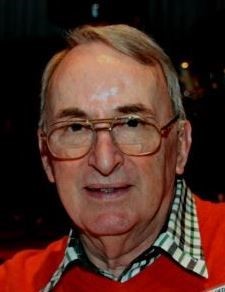
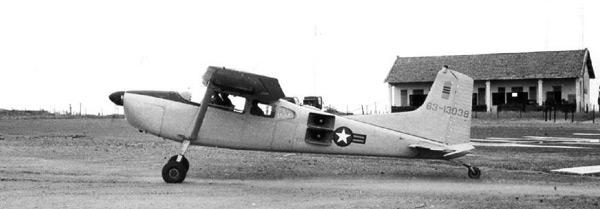 Another
new development described to us by our TMC colleagues was the PSYWAR
(Psychological Warfare) aircraft, examples of which were now often seen at
Nha Trang. The name had a somewhat Orwellian sound to it, even down to the
stated objective of the Psychological Warfare Program: 'To win the hearts
and minds of the people'. To achieve this end, specially equipped Cessna
aircraft with downward-pointing speakers blared metallic gibberish at
whoever might inhabit the towns or jungles below, a sort of airborne 'Big
Brother'.
Another
new development described to us by our TMC colleagues was the PSYWAR
(Psychological Warfare) aircraft, examples of which were now often seen at
Nha Trang. The name had a somewhat Orwellian sound to it, even down to the
stated objective of the Psychological Warfare Program: 'To win the hearts
and minds of the people'. To achieve this end, specially equipped Cessna
aircraft with downward-pointing speakers blared metallic gibberish at
whoever might inhabit the towns or jungles below, a sort of airborne 'Big
Brother'.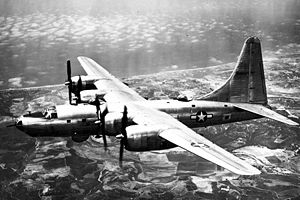
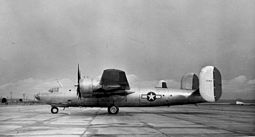
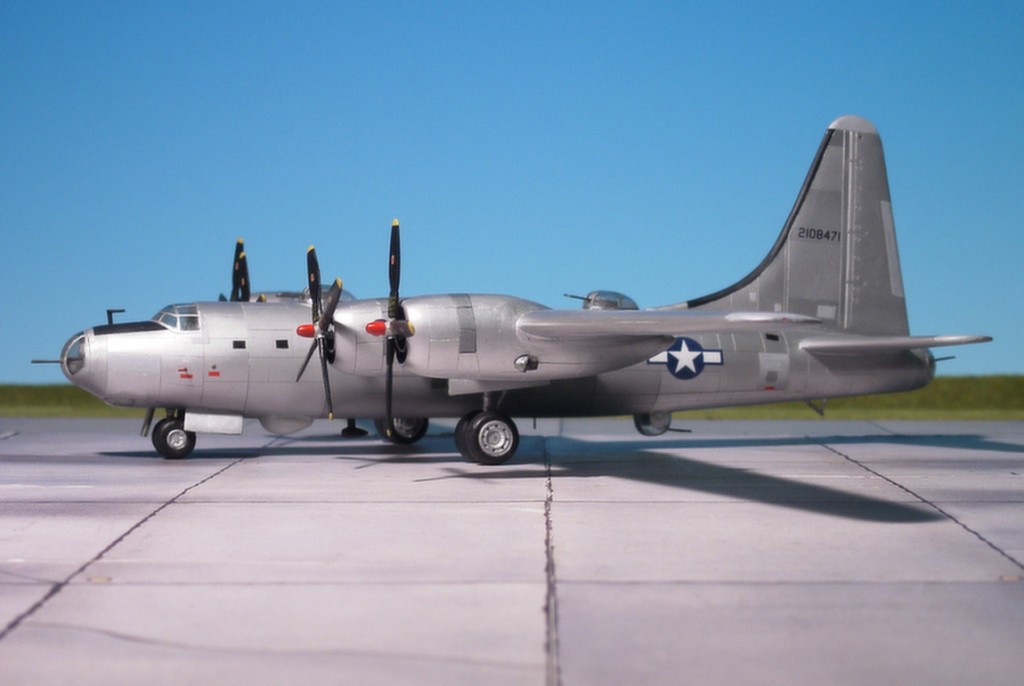
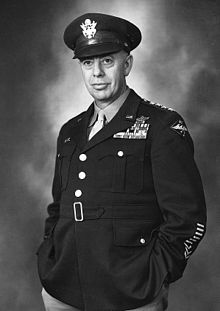
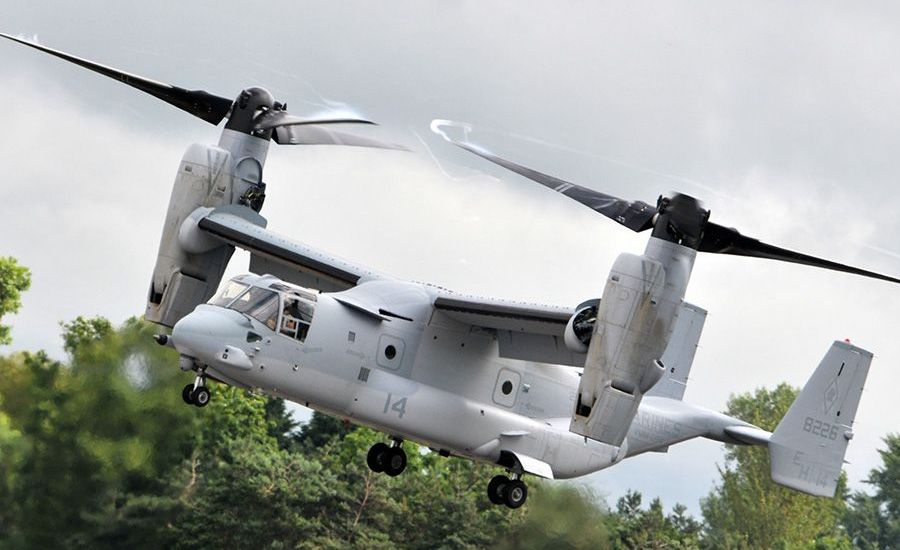
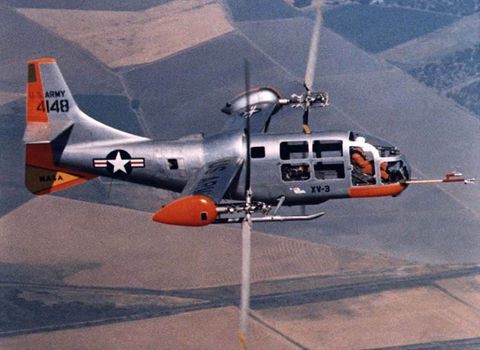
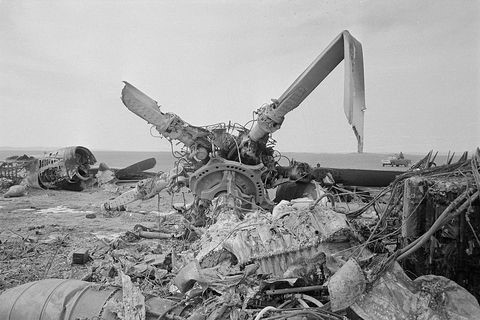 A collision between a C-130 Hercules and RH-53D at the refuelling site
caused the loss of aircraft and rescuers and forced the commander to abort
the mission.
A collision between a C-130 Hercules and RH-53D at the refuelling site
caused the loss of aircraft and rescuers and forced the commander to abort
the mission.